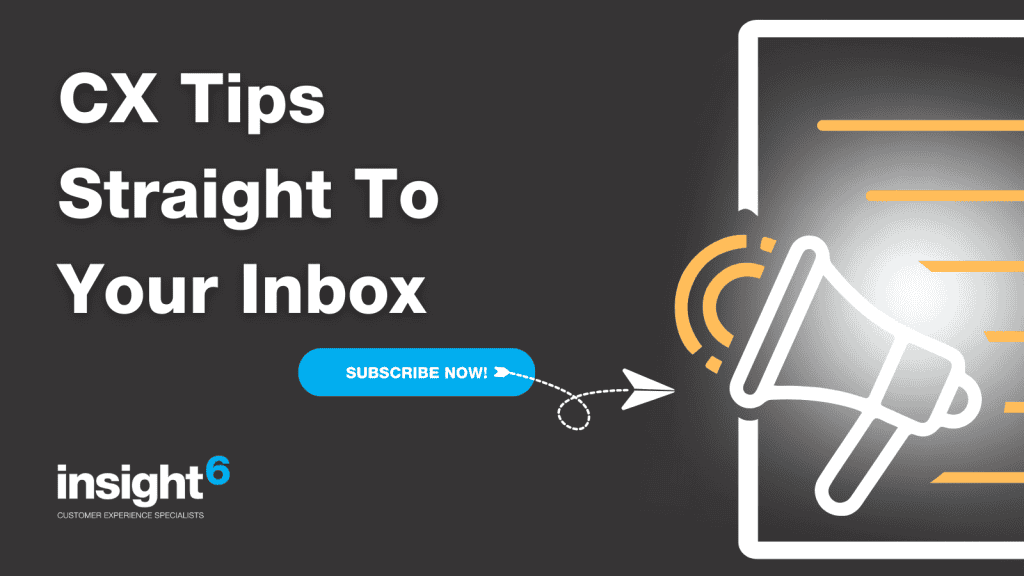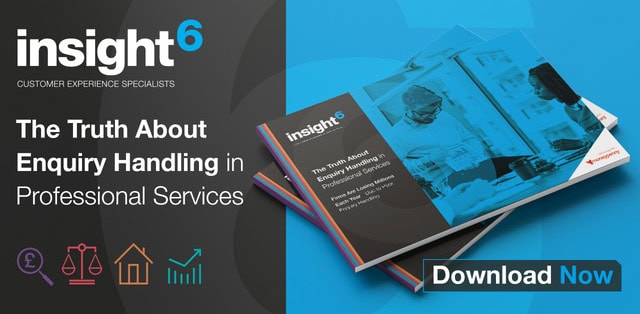Voice of the Customer: Gathering and Leveraging Customer Feedback
For many businesses, the challenge isn’t whether customers are talking – it’s how well the organisation is listening. It is here that the Voice of the Customer (VoC) comes in.
Here, we explore the definition and benefits of the Voice of the Customer, and how using it can not only enhance customer experience but also strengthen business performance.
Table of contents:
- What is the Voice of the Customer?
- How To Capture the Voice of the Customer
- VoC Research Methods That Work
- Designing Effective Voice of the Customer Surveys
- The Four Steps of VoC: From Data to Action
- VoC vs VoB: What Is the Difference?
- Turning Customer Feedback Into Measurable Improvements
What is the Voice of the Customer?
The Voice of the Customer (VoC) is the process of collecting, analysing and acting on customer feedback – not through one-off surveys or casual comments, but in a structured, systematic and consistent way.
True VoC gathers insights from every touchpoint, bringing them together to reflect the experience through the customer’s eyes accurately.
By doing so, businesses can listen in real-time, respond with purpose, and track how customer needs and expectations evolve over time.
By actively monitoring customer VoC, businesses can clearly see where they are meeting expectations and where they are falling short.
According to Aberdeen Group, organisations with best-in-class Customer (VoC) strategies saw 84% greater customer retention rates and up to 40% year-on-year revenue growth compared to companies that didn’t have these programmes.
Translating insights into action not only enhances the customer experience but also has wide-reaching benefits for overall business objectives and long-term growth.
How To Capture the Voice of the Customer
Capturing the Voice of the Customer requires building a comprehensive picture of the customer experience through a strategic mix of qualitative and quantitative research methods.
VoC Research Methods That Work
Covering the entire customer journey, from first contact to long-term service, requires a combination of approaches to minimise bias.
Effective VoC research methods include:
- Surveys – the most common tool, ideal for measuring satisfaction, loyalty or specific touchpoints.
- Interviews and focus groups – for a richer, qualitative insight into customer motivations – offering a more profound insight that surveys may miss.
- Mystery shopping, journey mapping and observation – first-hand experiences, helpful in highlighting practical barriers and service gaps.
- Review mining and unsolicited feedback, such as social media posts and online ratings, to monitor what customers are saying independently, rather than when prompted.
Designing Effective Voice of the Customer Surveys
There are two main types of Voice of the Customer surveys. The first is Transactional surveys, which capture feedback immediately after a specific interaction, such as a call or purchase.
The second is Relationship surveys, which are sent periodically and measure overall customer satisfaction.
The best customer VoC programmes use both types of surveys – transactional to identify and fix specific pain points, and relationship surveys to gain an understanding of the bigger picture.
Effective VoC surveys should also carefully consider:
- Timing and sample design – reaching the right customers at the right moments to ensure accurate and active responses.
- Channel mix – e.g., email, SMS, in-app, or phone surveys – depending on customer preferences, accessibility, and likelihood of response.
- Wording – questions should be clear, neutral and concise. Keeping surveys short and relevant improves response rates.
- Measurements – the use of scales such as Likert ratings (1–5 or 0–10) makes it easy to compare results over time.
Combining surveys with always-on listening provides a comprehensive and ongoing view of the customer experience. Doing so enables businesses to gather reliable insights which can then be used to inform decision-making and drive action.
The Four Steps of VoC: From Data to Action
Understanding how to capture the Voice of the Customer is just the first step of a successful programme. Turning feedback into meaningful change requires a structured process.
The four steps to converting data into action are:
- Capture – Gathering feedback across touchpoints using a range of methods. For example, a combination of surveys, review mining and observation at various stages in the customer journey. A common pitfall is relying on too few channels, which can provide a skewed or incomplete picture.
- Analyse – Segmenting data, coding themes and quantifying drivers of satisfaction or dissatisfaction. Grouping feedback by type or location, for example, can help to highlight issues. It is also essential to link feedback to the exact stage of the customer journey.
- Act – Using insight to address root causes, update processes, and implement team training. For example, if feedback shows confusion around onboarding, teams can redesign marketing collateral, streamline the welcome process, and train staff to deliver a consistent experience. Action should be timely, with businesses taking care to address the real cause of the issue.
- Close the loop – Informing customers about what has changed and monitoring the results. This might include follow-up emails summarising improvements or a customer feedback survey at a set time interval after the change. Changes should be communicated to ensure customers feel heard, strengthening the value of your customer VoC programme.
Our work with Hertfordshire Zoo is a positive example of turning insight into action. Using detailed customer experience reviews from year-round mystery shopping, phone and online assessments, insight6 delivered touchpoint-specific reports that formed a framework for managers and teams to enhance the customer experience.
Guiding 1-2-1 performance conversations, identifying development opportunities, and celebrating outstanding service across teams, CX scores rose, and the impact was clear: day ticket sales increased by 15%, total visitor numbers grew by 61% and membership increased by 820%.

VoC vs VoB: What Is the Difference?
While VoC represents customer needs and expectations, VoB reflects what the business needs to succeed. Understanding the difference between Voice of the Customer (VoC) and Voice of the Business (VoB) is essential for prioritisation and effective decision-making.
Let’s examine this further:
- VoC – captures and leverages customer feedback. The focus is external, concentrating on the end-user and improving the overall customer experience.
- VoB – represents a company’s objectives and commercial goals. The focus is internal, meeting the needs and expectations of stakeholders, such as profitability and growth.
Balancing customer needs with business goals is paramount for success. By using VoC to identify what matters most to customers, and VoB to assess the cost versus strategic value, the two can be aligned.
This allows businesses to prioritise, while remaining focused on ROI. Striking a balance provides enhanced customer experience and promotes loyalty, without compromising profitability or strategic objectives.
Turning Customer Feedback Into Measurable Improvements
For businesses to effectively leverage customer feedback, they must turn it into measurable improvements. A clear customer VoC operating rhythm is needed to translate insight into outcomes and drive meaningful change.
Essentially, this means establishing governance, assigning ownership, setting targets and embedding cross‑functional action planning so that feedback can be used to drive consistent improvement.
Specialist VoC metrics can be used to quantify customer feedback by measuring loyalty, satisfaction and ease of interaction. Examples of these metrics include:
- Net Promoter Score (NPS) – measures the overall relationship you have with your customers, specifically around loyalty.
- Customer Satisfaction Score (CSAT) – measures how satisfied a customer is with a specific product, service or interaction.
- Customer Effort Score (CES) – measures how easy or difficult it is for a customer to interact with your business.
Used in conjunction with operational KPIs, such as first-contact resolution, complaints, and churn, these metrics can provide a more comprehensive picture of the customer experience.
Businesses should seek to close the loop at both individual and systemic levels.
An example of a closed-loop process would be:
- Acknowledge customer feedback promptly.
- Analyse to identify root causes.
- Acting on insights with clear priorities and assigned responsibilities.
- Communicate changes back to customers to build loyalty.
- Monitor results to track progress and refine actions.
Conclusion: Make VoC Your Competitive Advantage
VoC is more than just feedback – it is the structured process of capturing, analysing, acting on and closing the loop with customer insight. Done well, these four steps can quickly become your competitive advantage.
It might seem daunting, but starting small makes it achievable. The true advantage lies in when VoC and VoB are aligned – prioritising actions that have the most significant impact for both customers and the organisation, and communicating improvements clearly so that customers feel heard and loyalty is maintained.
Interested in finding out more? Book a free consultation with your local CX specialist, or call +44 (0)800 970 8987.
At insight6, we work with over 1,200 businesses, offering tailored solutions to transform CX from end to end. To connect with your local CX Specialist, call +44 (0)800 970 8987 or visit www.insight6.com
Sign up for the insight6 newsletter to stay ahead with the latest CX strategies and insights.




0 Comments